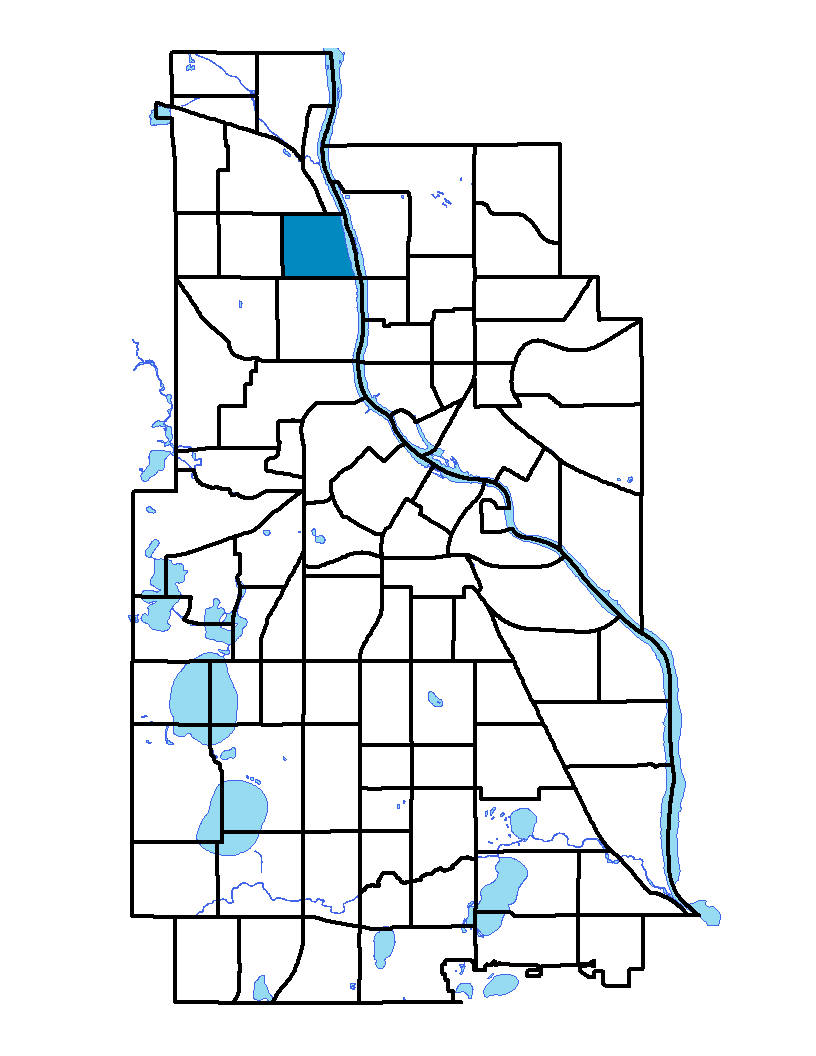McKinley neighborhood on Minneapolis' north side is bound on the north by Dowling Avenue North, on the south by Lowry Avenue North, on the west by Dupont Avenue North and on the east by the Mississippi River. The neighborhood and its elementary school are named for William McKinley, the 25th president of the United States. In 1996, with approval of the City Council, McKinley neighborhood annexed the North River Industrial Area. This area is located along the river and extends to Interstate 94. Many of the homes are two-story, single-family homes with wood frames; bungalows and some small stucco Tudors. Most of the houses were built between 1910 and 1930.
To learn more about the neighborhood association visit: www.mckinleycommunity.com
Indicator Details
|
Indicators |
Primary Domain | Indicator Value | Rank | Tier |
|---|---|---|---|---|
| Access to Mainstream Financial Services | Economic Health | 37.6% | 72 | Bottom |
| Access to Parks and Open Space | Natural Areas | 0.8% | 78 | Bottom |
| Adult Educational Attainment | Educational Opportunities | 82.2% | 64 | Bottom |
| Age of Housing | Housing | 88.1% | 49 | Middle |
| Blood Lead Levels in Children | Housing | 5.6% | 57 | Middle |
| Business Retention | Economic Health | 1.3% | 45 | Middle |
| Chronic School Absence | Health Systems and Public Safety | -% | - | Data N/A |
| Commute Mode Share | Transportation | 24.7% | 52 | Middle |
| Employment Rate | Employment Opportunities | 52.5% | 76 | Bottom |
| Excessive Housing Cost Burden | Housing | 44.1% | 71 | Bottom |
| Food Desert | Neighborhood Characteristics | 100.0% | 31 | Middle |
| High School Graduation Rate | Educational Opportunities | -% | - | Data N/A |
| Household Transportation Costs | Transportation | 18.6% | 66 | Bottom |
| Local Business Vitality | Economic Health | 57.7% | 32 | Middle |
| Long-Term Unemployment | Employment Opportunities | 4.4% | 27 | Top |
| Low Birth Weight | Health Systems and Public Safety | 11.8% | 70 | Bottom |
| Motor Vehicle Collisions | Health Systems and Public Safety | 3.7 | 30 | Middle |
| Offsite Alcohol Outlets | Neighborhood Characteristics | 1 | 6 | Top |
| Pedestrian Connectivity | Transportation | 78 | 81 | Bottom |
| Preschool Enrollment | Educational Opportunities | 31.3% | 67 | Bottom |
| Preventable Hospitalizations | Health Systems and Public Safety | 13.1 | 79 | Bottom |
| Proximity to Brownfield Sites | Environmental Hazards | 0.0% | 1 | Top |
| Proximity to Superfund Sites | Environmental Hazards | 0.0% | 1 | Top |
| Public Assisted Households | Employment Opportunities | 59.7% | 76 | Bottom |
| Reading Proficiency | Educational Opportunities | -% | - | Data N/A |
| Residential Mobility | Social Cohesion | 69.2% | 70 | Bottom |
| Residential Proximity to Traffic | Environmental Hazards | 22.4% | 60 | Bottom |
| School Proximity to Traffic | Environmental Hazards | 100.0% | 57 | Middle |
| School Readiness Scores | Educational Opportunities | -% | - | Data N/A |
| Toxic Releases from Facilities | Environmental Hazards | 46.9% | 65 | Bottom |
| Transit Accessibility | Transportation | 243.3 | 60 | Bottom |
| Travel Time to Work | Employment Opportunities | 21.2 minutes | 26 | Top |
| Tree Cover | Natural Areas | 28.8% | 40 | Middle |
| Vacancy Rates | Housing | 18.5% | 82 | Bottom |
| Violent Crime | Health Systems and Public Safety | 78.5 | 70 | Bottom |
| Voter Participation | Social Cohesion | 11.2% | 82 | Bottom |
| Walkability | Neighborhood Characteristics | 51 | 66 | Bottom |

